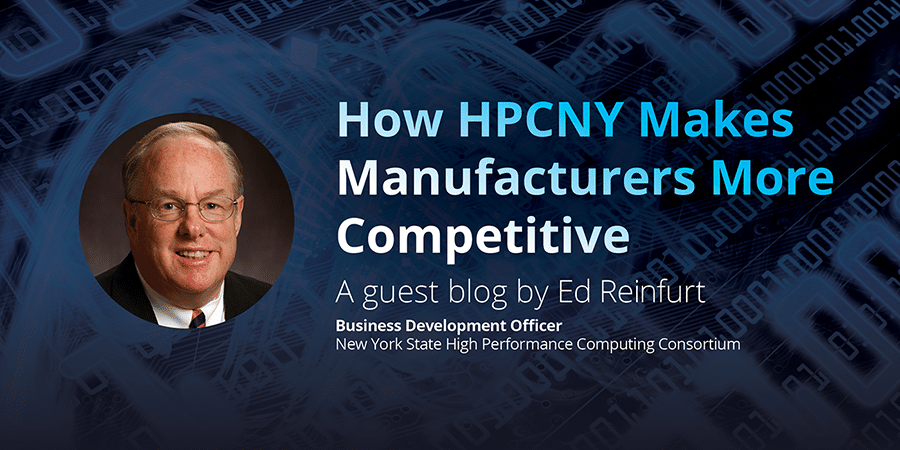The U.S. Council on Competitiveness is a highly-respected organization that emphasizes the importance of technology leadership to success in the global marketplace. So it was quite a compliment when the Council spotlighted the New York State High Performance Computing Consortium (HPCNY) in the opening panel at the recent Advanced Computing for Competitiveness Forum.
This event, which was held on April 13 at the New York University Center for Urban Science and Progress in Brooklyn, was the first of four regional forums the Council plans to hold across the U.S., showcasing successful efforts by companies, states, and national laboratories in leveraging the power of high performance computing (HPC) to create competitive advantages in the marketplace.
In the Air and on the Ground
Larry Patterson, Director of Advanced Computing Technologies for Gulfstream Aerospace Corporation, moderated the opening panel. Patterson was instrumental in Gulfstream’s first foray into HPC some 15 years ago. He described HPC’s importance to the development of Gulfstream’s most advanced corporate aircraft (G650ER), which now has an industry-leading range of 7,500 nautical miles. “Private companies can no longer ignore, or simply not understand” what HPC can do for them, Patterson explained.
Dr. Mark Shepard, Director of the Scientific Computational Research Center (SCOREC) at Rensselaer Polytechnic Institute, and Dr. Shawn Matott, Computational Scientist at the Center for Computational Research (CCR) at the University of Buffalo (UB), were the university representatives for HPCNY. Dr. Shepard and Dr. Matott discussed their work with companies from startups (Pliant Energy), to mid-size manufacturers (Blasch Precision Ceramics and Gould Pumps), to industry leaders (Praxair and IBM).
Case Study: Sentient Science
The industry perspective on HPCNY was provided by Ed Wagoner, Chief Digital Officer of Sentient Science. Sentient’s early work with CCR at UB enhanced the company’s technology and was pivotal in deciding to move its headquarters to Buffalo. By modeling the microstructure of critical components in physical assets like wind turbines, Sentient Science predicts failure initiation and identifies life extension actions.
In his opening remarks, Wagoner said that “the only reason we exist is because HPCNY enabled us to exist.” Since then, Sentient Science has grown from 15 to now over 70 employees. Currently, over 18,000 wind turbines worldwide are under contract to leverage Sentient’s technology. Internal projections call for the company to serve 50,000 wind turbines by 2018. Recently, Sentient executed its first contract with the railroad industry – a promising new market.
The Time to Become More Competitive Is Now
The Advanced Computing for Competitiveness Forum was an all-day event that addressed the skill needs of modern industry, approaches to improved partnerships with the software industry, and new approaches to industrial HPC partnerships with the national laboratories. For companies that haven’t tried to understand how HPC can provide a competitive advantage, the time to act is now.
To learn more about HPCNY, please contact us. You can also submit a FuzeHub request for assistance, and ask for a connection to HPCNY.

